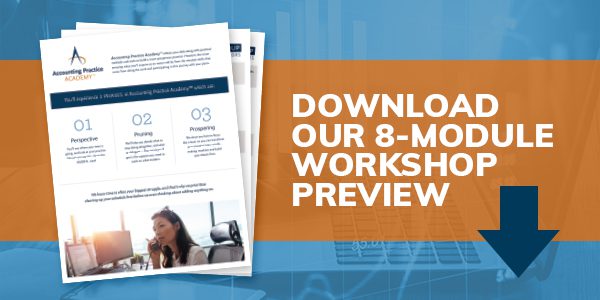When is the best time to sell your accounting practice?
Are you actually ready to sell?
Deciding when to bow out is one of the most difficult decisions owners have to make. If you have not yet made the decision to sell, then please check out our AICPA published column Timing Your Exit From Your Accounting Firm to help you think through some of the bigger questions around this all important decision.
Tis the Season.
If you want to know more about the seasonality of the market, we’ve broken down our take on each of the 4 seasons. This will help you get a better idea of how long it might take your firm to sell if you were to begin marketing in that season.
Winter – A lot of closings occur in January and even into February.
Buyers typically like to close on acquisitions prior to tax season. They want to capture the tax season cash flow and it’s also a great time to develop relationships with new clients and staff because there are usually a lot of client touch-points this time of year. Although a winter closing can be a bit hectic in terms of transitioning during busy season, buyers typically “roll up their sleeves” and dig in. Sometimes the heavy focus and longer hours can expedite things nicely. It’s amazing how productive people are when they are highly focused on transition. (Buyers take note – expect to work long hours your first season!)
If you decide to start marketing your firm in the winter, then you can likely anticipate a summer or fall closing assuming that your firm is reasonably well-positioned for a sale.
Spring – This is a great season to start marketing your firm.
This gives ample time to get your firm on the market and to engage in conversations with buyers. Buyers are usually less active in May and into June in general, but the market picks up afterwards. It’s great to have exposure to the market as it heats up later in the summer and into fall. Depending on the marketability of your accounting practice, a summer or fall closing is typical. The majority of Poe Group Advisors’ closings occur between the months of September and January.
Summer – OK it’s time to get serious.
We can typically get a practice on the market in a couple of weeks from the time it’s listed until it’s ready for the market. This allows you time to onboard and help create a profile that goes out to potential buyers. A good profile is very important as it will both help to resonate with buyers who are likely to be a good fit for your firm and help filter out those who are not. Once August comes around, buyers are very active and generally motivated to close quickly.
Fall – It’s showtime.
If you list in early fall, and you have a highly desirable firm, then yes – you can still sell before tax season. Our record time from date of listing to closing – excluding fire sales – is just around 4 weeks. That’s not typical! It generally takes around 3 months if there is strong demand, and everything goes smoothly. A timeline might look like:
- Onboarding and building your firm profile – 1 to 2 weeks
- Engaging with buyers and striking a deal that results in a signed contract – 3 to 6 weeks
- Due diligence, financing, transition planning and close – 6 to 10 weeks.
Other thoughts on timing:
Don’t force it. Finding the right fit is crucial for a good transition. Unfortunately deals can and often do take longer than sellers might want things to take. We love it when a deal comes together where everyone involved has high confidence that a great match has been made. Sometimes a seller is lucky and that happens right away and other times it just takes longer. My grandfather used to say “If you want to get done sooner, then take your time.” I now know exactly what he meant by that. Patience will help you make the right decision, as opposed to rushing. In our experience, when the fit isn’t right, that will usually come to light before a close and then time has been wasted that could have been spent finding the right buyer.
Also – don’t drag your feet. There is a saying in our industry that “Time kills deals.” That is certainly true. Deal fatigue is a real thing. When clients and advisors overcomplicate, overthink and over-delay, deals can collapse.
Banks are busy in Q4. Financing is often the most time-consuming aspect of a transaction. Set expectations accordingly. For many reasons, it’s smart to work with a lender who has experience in the accounting vertical. Since a lot of closings occur in the 4th quarter, these banks will be quite busy.
Other Useful Seller Resources:
The Sellers Guide to Evaluating Buyers – As mentioned above, don’t force it. This guide will help you think through what your potential buyer needs to be like in order to experience success in your particular firm.
Pricing Factors Report – Find out what your firm is worth. By better understanding what drives firm values, you’ll also better understand the possible demand for your practice in the marketplace which can also impact timing.
Explore all Seller Resources – If you’d like to book a call with us, watch a video on getting top-dollar for your firm, or download our succession planning guide, you’ll find these and more at our seller resource hub.






